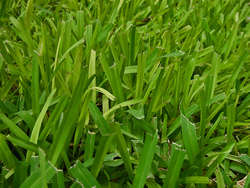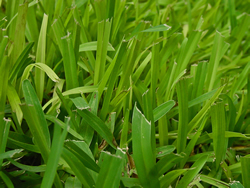Search
For The Answer
Click here to access our database of
Plant Answers
Search
For The Picture
Click here to access the Google database of plants
and insects
Information
Index
Alphabetical Listing of Topics, Recommendations
and Plants
Milberger's Nursery and Landscaping
3920 North Loop 1604 E.
San Antonio, TX 78247
210.497.3760
nursery@milbergersa.com
Open 9 to 6 Mon. through Sat.
and 10 to 5 on Sun.

Three exits east of 281, inside of 1604
Next to the Diamond Shamrock station
Please click map for more detailed map and driving directions.
YELLOW ST. AUGUSTINE GRASS
Question: My grass is pale green in irregular spots. It started last year, but looked good this spring; it became worse in the last week or so. The pale blades are uniformly pale, the dark green blades are uniformly dark green. The pale blades are spreading through the yard. Any suggestions on what the problem is?
======================================
==============
============================================== Yellowing grass can also be caused by lack of nitrogen fertilizer. This yellowing will differ from iron chlorosis in that there will be no parallel stripes of yellow and green on the grass blade. Instead, the grass blade will be solid yellow. The best way to solve this problem, as well as the iron chlorosis problem, is to apply a combination nitrogen-iron product such as Iron Plus. If you want to use Green Sand, just make an application of a slow-release lawn fertilizer such as 19-5-9 after the Green Sand is applied. Water thoroughly after applying.
================================ For more information on TARR see the article at http://www.plantanswers.com/root_rot_fungus.htm |







